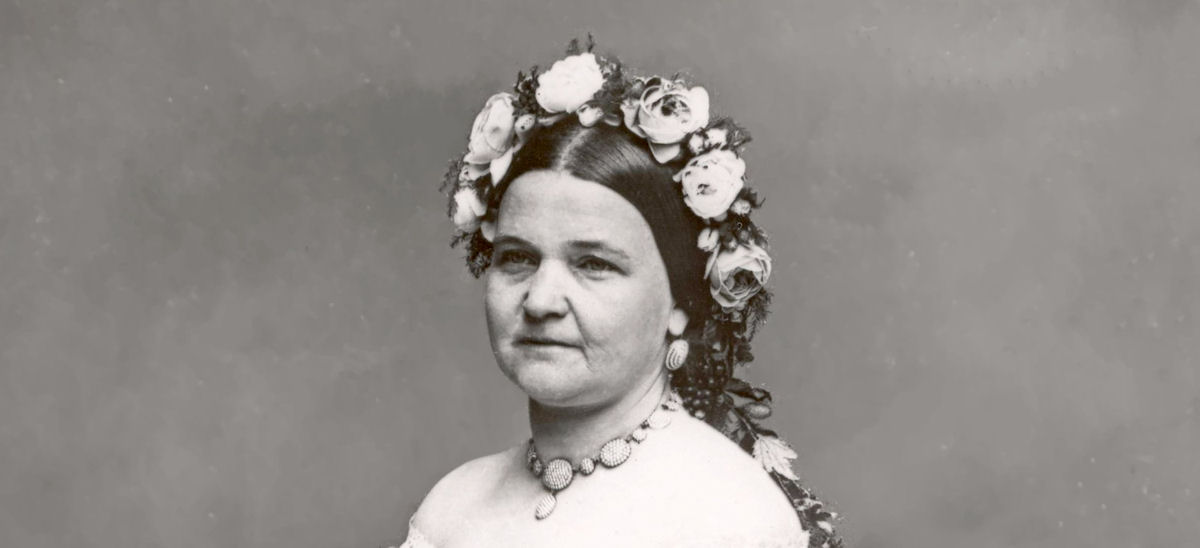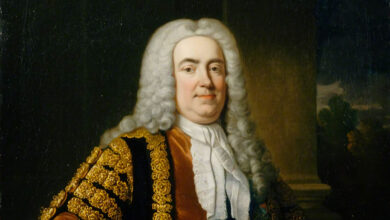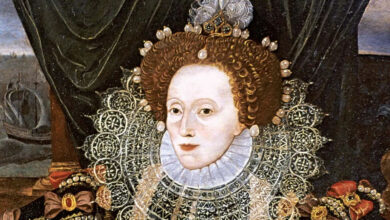
“If you keep making jokes like that, someone is going to shoot you, father” – Mary Todd Lincoln
Podcast: Play in new window | Download
Subscribe: Spotify | Amazon Music | Youtube Music | RSS
Mary Todd Lincoln Biography
Mary Ann Todd was born into a world of social prominence and affluence. She was well educated and as a young lady was considered attractive, witty, and intelligent. As wife of the 16th president of the United States, Abraham Lincoln, Mary would become one of history’s most controversial first ladies. Biographers, supporters and detractors have described and ascribed all manner of behavior to her but she remains an enigma into the 21st century.
Mary Ann Todd was born in Lexington, Kentucky, on December 13, 1818, to Robert Smith Todd and Eliza Todd (formerly Parker). Hers was a large and wealthy southern family. Mary’s father was a merchant and politician and through his political activity and friendships, Mary developed a deep love of politics.
Unlike many young ladies of her generation and community, Mary was well-educated. She attended a local academy, then boarding school. She was well and diversely read, politically astute, trained and skilled in the social graces of her time. And although her family were slave-holders, one legend recounts that her maternal grandmother worked with the Underground Railroad to help slaves reach freedom; this may have influenced Mary’s later firm commitment to the abolition of slavery.
Eliza Todd died from complications in childbirth in 1825 when Mary was only six years old. Her father remarried two years later and, by all accounts, the relationship between the new Mrs. Todd and her step-daughter were strained.
Mary moved to her sister and brother-in-law’s home in Springfield, Illinois in October 1839. Ninian W. Edwards acted as Mary’s guardian and said of his attractive and charming sister-in-law, “she could make a bishop forget his prayers.”
Popular Mary Todd became one of the belles of Springfield and attracted many suitors including the grandson of Revolutionary patriot, Patrick Henry, and no fewer than four future U.S. senators. Ironically, one of her beaus, Stephen A. Douglas, was a chief political rival of her future husband.
She and Abraham Lincoln met at a ball in 1839 and courted for a year before he broke off the engagement, claiming that he “was unworthy of such a girl.” Accounts differ as to why he resumed his courtship but he did and the couple married in November 1842. They made Springfield their home for the next 18 years. All four of their children were born in Springfield: Robert (1843); Edward (1846); William (1850); and Thomas (1853).
Accounts by friends and family indicate that Mary Lincoln (she did not refer to herself as Mary Todd Lincoln) enjoyed her life as wife, mother, and homemaker. She enthusiastically supported her husband’s legal and political ambitions but also experienced extended separations from him. He traveled for both legal and political business for as many as six to nine months at a time. From the time of their marriage through 1849, Lincoln built a law firm, served one term in the U.S. House of Representatives, ran twice (unsuccessfully) for the Senate, and was elected president in 1860.
Accounts of the felicity of their marriage are sharply divided. His law partner, William Herndon, wrote of it as “a domestic hell on earth.” “Poor Lincoln! He is domestically a desolate man – has been for years to my own knowledge.” Herndon described Mary as “a very curious – eccentric – wicked woman.” There are accounts that she was abusive and shrewish; other contemporaries wrote of their absolute devotion to one another. Various of Lincoln’s cabinet members also were sharply critical of Mary’s difficult personality and extremes of behavior.
The first of the Lincoln family’s tragedies occurred in 1850. Edward, known as Eddie died of tuberculosis at age four. Mary, known within her family as mercurial in nature, was devastated and fell into deep depression. Periods of debilitating depression would recur throughout her life.
The Lincolns moved into the White House in 1861, unprepared for the cool reception they would receive from Washington insiders who viewed the new president and first lady as “westerners”. It took almost no time at all after her arrival in Washington, D. C. for critics to start faulting her every move. Mary Lincoln could do no right.
In fairness, some criticisms were justified. Mary spent a considerable amount of money refurbishing the dilapidated White House. She dressed stylishly and was a gracious hostess who threw lavish parties. It also became known that she significantly overspent her budget, accepted gifts and bribes from those seeking to use her influence with her husband, and kept money from falsified (and padded) White House accounts.
Often considered vain and arrogant, Mary was also cheerful, loving and supportive. Mary was known to visit military hospitals, giving gifts to wounded soldiers and writing letters for them. She also accompanied her husband on military visits to the field. She fiercely supported her husband’s policies, the Union cause, and advocated strongly for the Emancipation Act.
Another wave of loss and grief struck in 1862. The Lincoln’s son, William, known as Willie, died of typhoid fever. Lincoln was deeply concerned that she would be driven mad and that he would have to commit her to an asylum. Mary also suffered a head injury in 1863 from an accident in which she was thrown from a carriage, knocking her unconscious for a period of time.
By 1865, Mary’s mood swings and “capricious behavior” had increased. It is known that she suffered for many years from various ailments and frequent disabling headaches. However, all seemed peaceful and happy with the Lincolns on the night of April 14, 1865. They were observed holding hands and whispering to each other when John Wilkes Booth stepped through the curtain into their theatre box and fired the shot that would kill the 16th president. The president was moved to the Petersen House, across the street from Ford’s Theatre, where he died hours later. Mary had been ordered from the room because she “was so unhinged with grief.”
It would be more than five weeks before the deeply traumatized Mary moved from the White House. She first moved to Chicago, Illinois, to settle her husband’s estate and then began lobbying Congress to award a presidential widow’s pension. Her efforts were successful and in 1870, she began receiving an annual pension of $3,000. She and her youngest son, Tad, moved to Europe in 1868 where he attended school for approximately three years. They returned to Chicago in 1871, where he unexpectedly died at age 18 (the cause is uncertain and has been variously attributed to congestive heart failure, tuberculosis, pleuristic attack, or pneumonia).
Tad’s death may have further exacerbated Mary’s instability. Her surviving son, Robert, sought legal action and was granted the authority to have his mother committed to the Bellevue Insane Asylum in Batavia, Illinois, in 1875. Twice on the day of the verdict, Mary tried to commit suicide; her efforts were thwarted by an astute druggist who replaced the requested laudanum with a sugar substance.
Mary’s stay at Bellevue was brief. Her attorney, Myra Bradwell (one of the first women lawyers in the U.S.) filed an appeal and Mrs. Lincoln was released to the care of her sister Elizabeth after four months’ confinement. The jury in a second trial in 1876 declared her sane and she moved to France for four years. She returned to the home of her sister and brother-in-law in 1880 and died on July 16, 1882 at the age of 63 years.
Perhaps few other first ladies have been so vilified and analyzed as Mary Lincoln. In modern psychiatric terms, Mary may have suffered from a (probably inherited) bipolar disorder and many of the outbursts, tantrums, depressions, and psychotic episodes support this possibility. Additional issues, including hypothyroidism and diabetes, would have increased her health challenges.
Undoubtedly her behavior created distress and offense to many around her. But consider also the numerous burdens of her life. Her mother died when Mary was a young child; her step-mother was apparently a woman unsympathetic toward her step-children. She experienced censure from her family members who held southern sympathies during the war. Mary was a staunch Union supporter who witnessed first-hand the struggles and horrific pressure placed on her husband, the president as the chief wartime leader of a fragmented nation. Three of the Lincoln’s children died tragically young. As one biographer graphically put it, her husband was holding Mary’s hand when he was shot and Mary felt the jerk of his body as the bullet entered the back of his head. Finally, Mary experienced perhaps the ultimate betrayal – being declared insane – at the bequest of her only surviving child.
Few other first ladies have generated as much controversy as Mary Todd Lincoln. Her supporters and detractors (in her lifetime and unto the present) often seem to be at extremes in their convictions, reminiscent of the extremes of her life: she was a dreadful villain or a tragic victim. Probably she was elements of both. Certainly, the 21st century reader might accept that she made tremendous mistakes, acknowledge her courage and accomplishments, and have some compassion for a woman of troubled mind and tragic experiences.
Podcast: Play in new window | Download
Subscribe: Spotify | Amazon Music | Youtube Music | RSS




